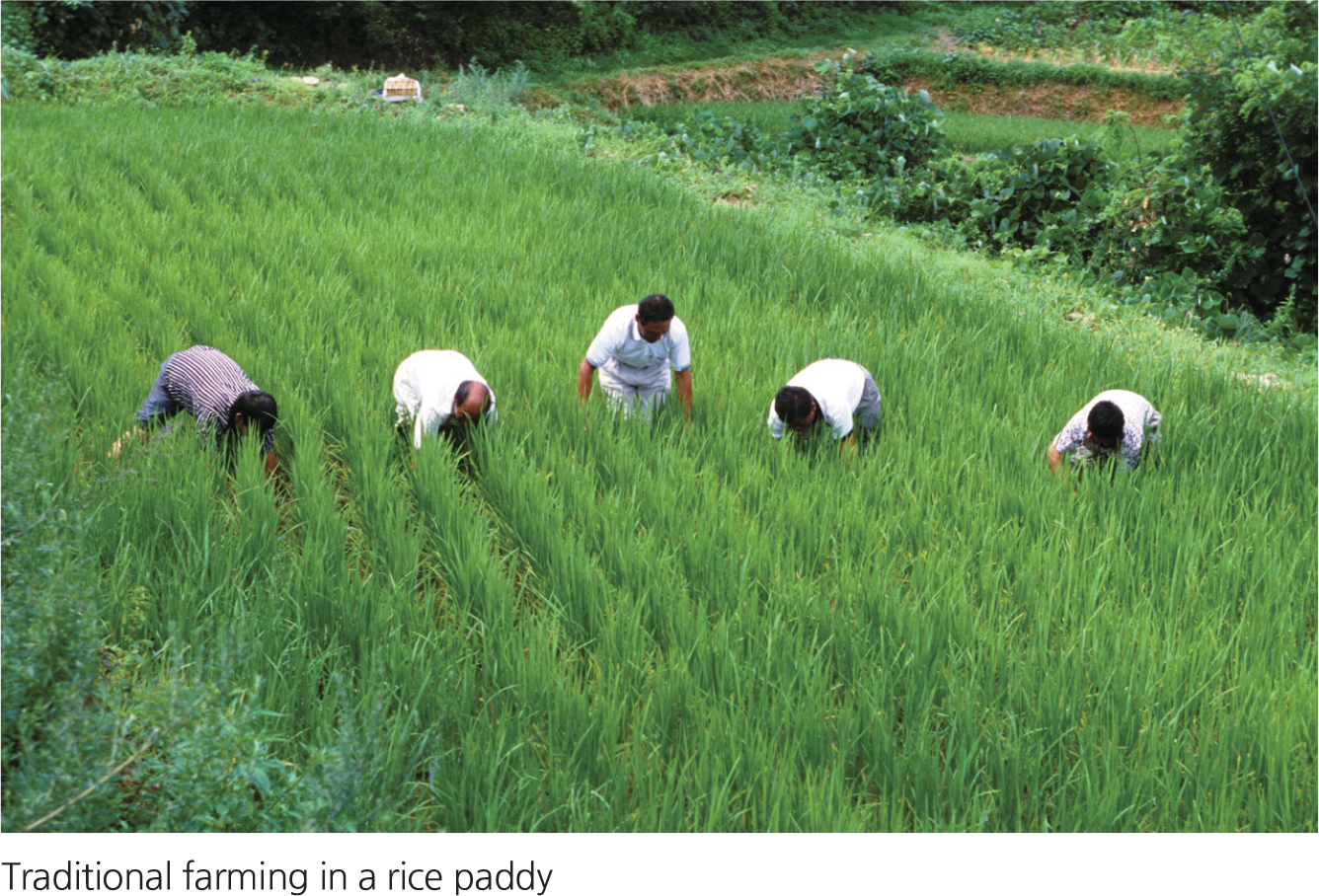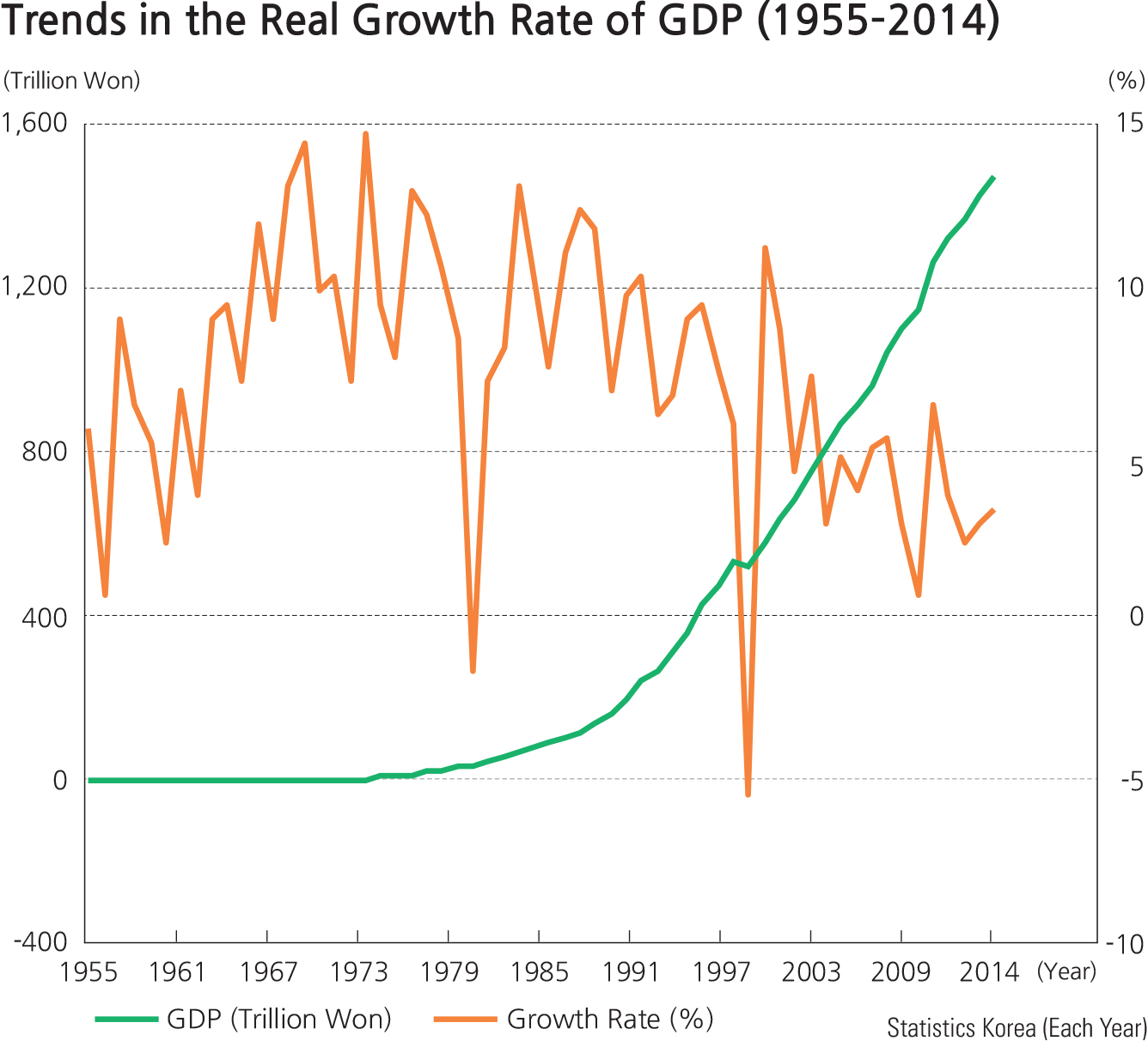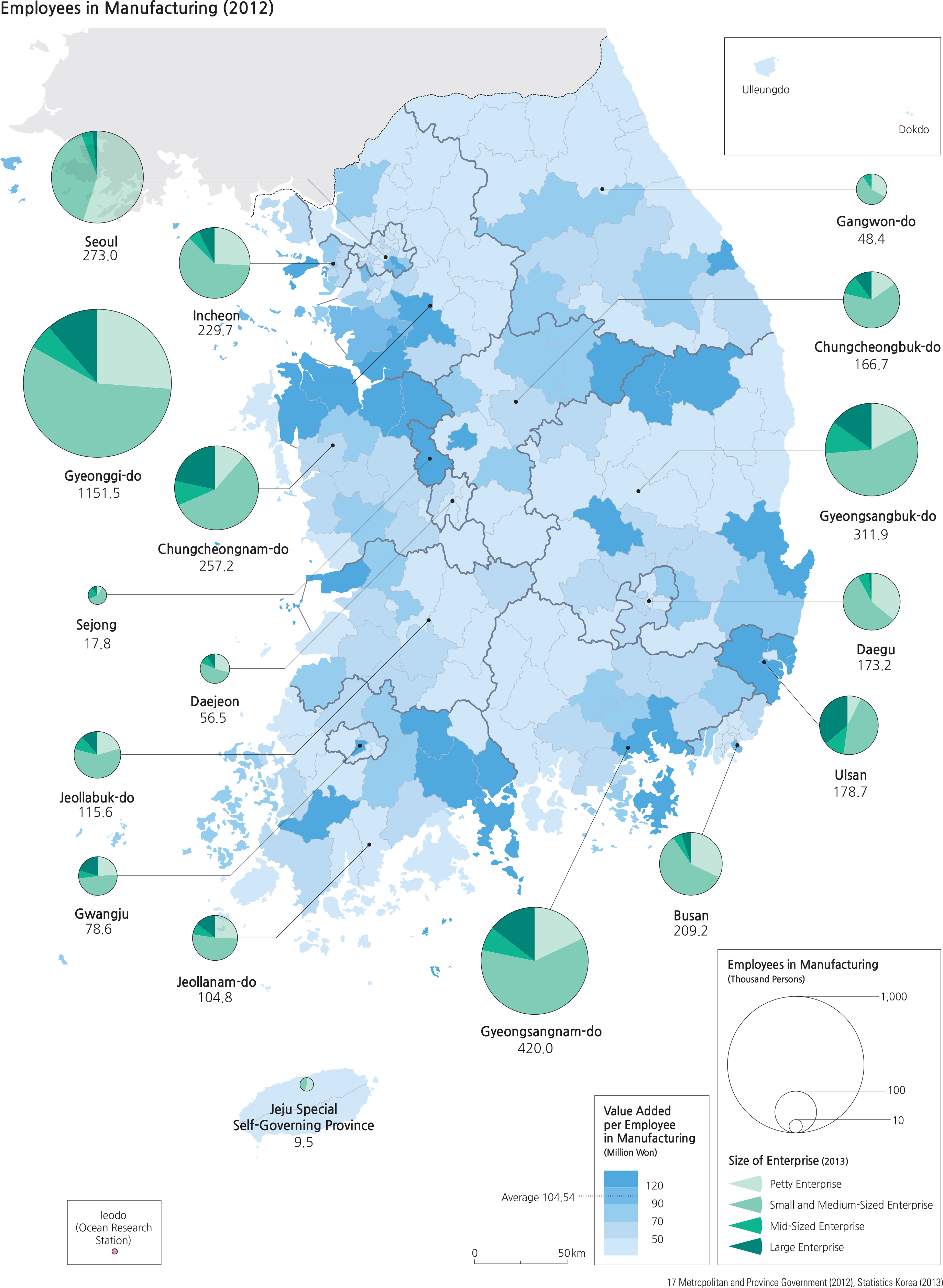The story of Korea’ economic development is remarkable. Prior to the 1960s, South Korea was one of the poorest nations. But after several decades of rapid growth (see the chart below) South Korea now ranks among the world’ most powerful economies. According to the World Bank (2014), Korea’ gross domestic product (GDP, the total value of everything produced) was ranked 12th in the world in 2014 at 1 trillion won, or 1,410 billion US dollars. In terms of international trading, the highest volume of exports was to China, followed by the United States, Japan, Singapore, and Vietnam. Meanwhile, China was also the country from which Korea received the most imports, followed by Japan, the United States, and Saudi Arabia. In particular, China has been Korea’ most important trading partner since 2007.
A common trend has occurred in may industrialized countries as their economy grows. Primary industries (such as agricultural, forestry, and livestock industries) are the most important at the outset, but they begin to make up a smaller and smaller percentage of the total national production, while secondary industries (such as manufacturing) increase in importance. Finally, as manufacturing declines in relative importance, the service industries grow. Service industries provide non-material products including commerce, food and lodging, tourism, transportation, communication, finance, real estate, health and medical care, and so forth. Service activities are diverse and vary from simple labor to complex knowledge dissemination, and from satisfying individual needs to assisting with various other production activities.
Compared to other developed countries, the shift away from primary industries occurred rapidly in Korea. Agricultural production fell from 40% to 7% of national production in only 26 years in Korea, compared to 100 years in Britain, the Netherlands, and Denmark, and over 90 years in the United States, Germany, and France. In Japan, this shift took close to 73 years. In South Korea, manufacturing reached its peak in the 1990s and currently service industries are growing and have become the main foundation of the Korean economy. The economic sectors of agriculture, forestry, fishery, mining, and manufacturing have continued to decline since 1993, while service sectors have increased.
The decline and structural changes in the primary industries did not occur uniformly across regions in Korea. Most rural areas did not have enough local jobs to absorb the surplus agricultural labor force. Therefore, there was mass migration to the cities, with almost no migration to rural areas. As a result, there are still some areas that maintain a high proportion of employment in the primary industries. During the early industrialization stage in the 1960s, Seoul was the most important manufacturing center in the country. Since the 1980s, however, manufacturing has become suburbanized and decentralized outside of the Greater Seoul Metropolitan area.



